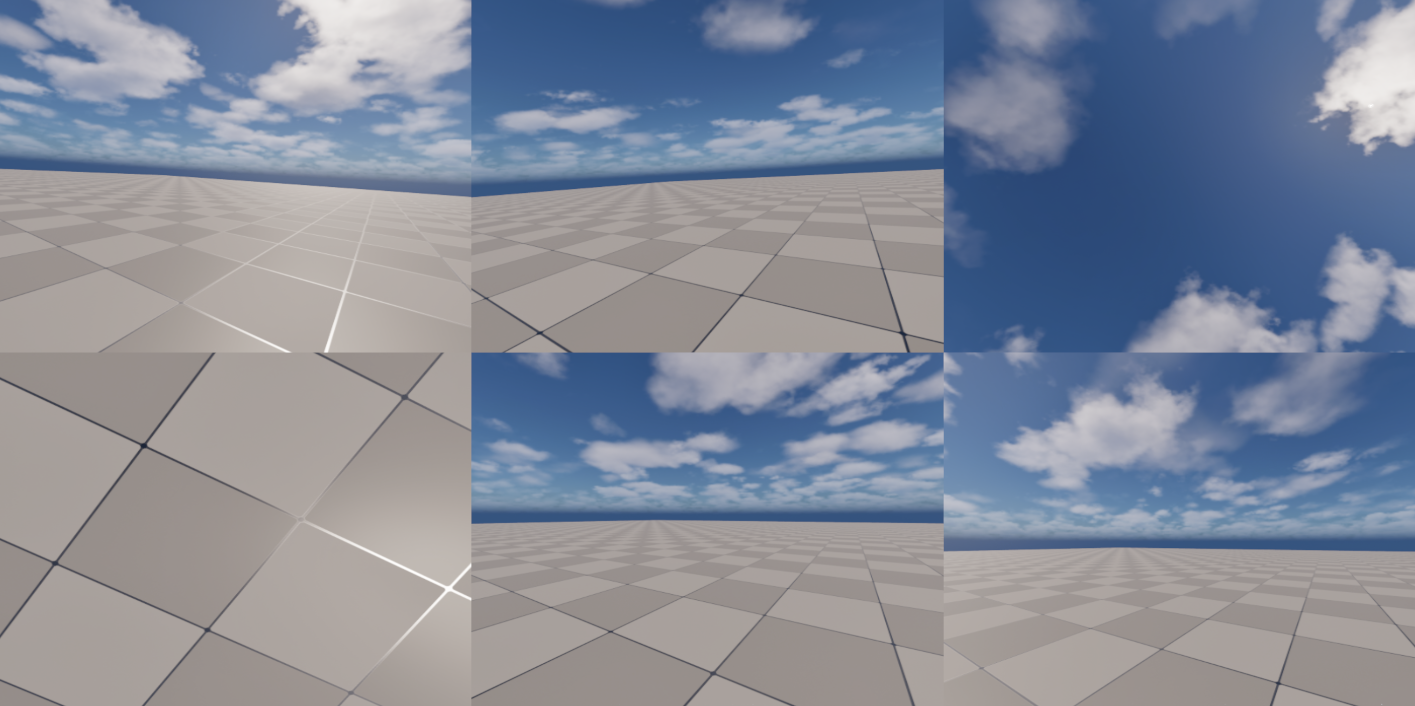Cubemap:
This format shows the 6 faces of the 360 render in a row, the 6 1:1 images make up an output map that is a 2:1 aspect ratio. 
DomeMaster:
This format is the standard for films shown in a Dome or Planetarium. It automatically turns the camera to look directly up and creates a 1:1 aspect ratio 360 fisheye-like texture. A typical dome is 180 degrees but the camera allows for this angle to be adjusted up and down for domes with other projection surfaces. 
Equirectangular
This output type is the most common for Monoscopic Cinematic 360 renders. Rendering in a monoscopic format has the advantage of increased potential resolution over stereoscopic formats so attaining a crisp image is easier. The drawback of this format is that it does not have any disparity between the left and right eye, so gives no head-motion parallax. motion parallax is still effective in monoscopic. 
180 Equirectangular
This monoscopic format gives a 180 degree field of view in a 1:1 aspect ratio and is a useful format for attaining a very high resolution and crisp image for VR180 viewing or as an alternative for domes or other projection surfaces. 
VR180 Stereo Equirectangular
This is the most stable method for rendering Stereoscopic images because it provides a wide viewing range with 50% less of the pixels to be rendered/ decoded than stereo 360. The 180 Degree field of view also eliminates the head turning and convergence problems of 360 Stereo formats. 
VR360 Stereo Equirectangular [Experimental]
This output type enables you to render Stereoscopic 360 frames that can give the effect of depth via convergence. The two images show a slightly different image and converge on a point in the distance to give the effect of depth that our eyes naturally achieve. This feature is listed as experimental because of the inherent problem with Stereo Parallax and pre-rendered footage. It is physically impossible to allow the viewer to turn their to the side and also have the option to move their eyes to the side and have a parallax effect which caters for both of these movements. But new image blending techniques could be employed in the future to achieve a cleaner, more convincing image in this format.

Stereographic (Tiny World)
This projection type angles the camera downwards automatically and gives an extreme fisheye effect in a 1:1 aspect ratio. This effect is most often seen in experimental photography to give the effect of looking down at an orb or Tiny Planet.

This is an Advanced feature which allows you to add an output mask to one of the projections above (not cubemap) so that it only renders the pixels included in the mask. This is more efficient both in terms of rendering and in file-size management. You can see an example of a custom dome projection which is a 180 equirectangular with a mask below.

